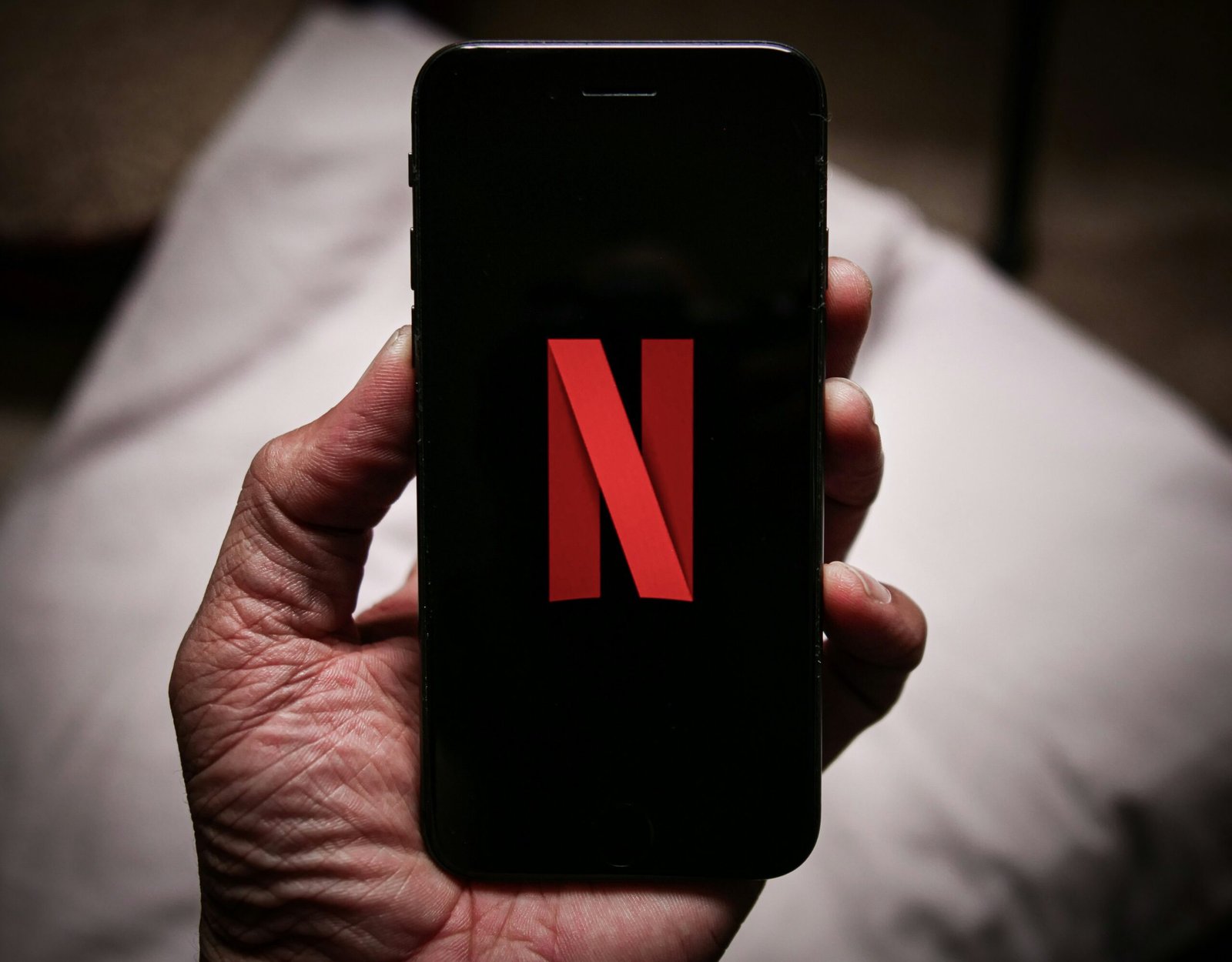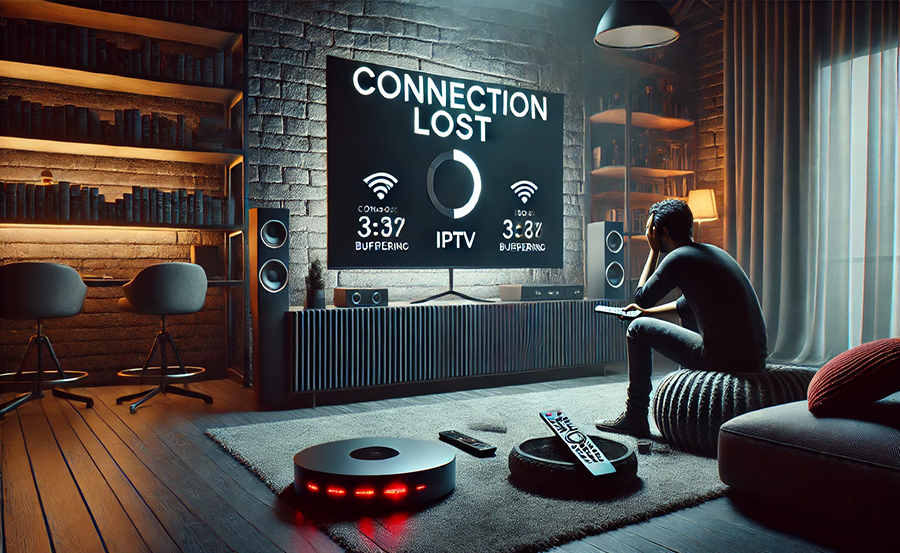
With the rise of streaming services, traditional television networks have had to adapt to the changing landscape of content consumption. Gone are the days when viewers had to wait for their favorite shows to air at a specific time on a specific channel. Streaming services have given viewers the freedom to watch their favorite shows and movies whenever and wherever they want.
Get the best iptv deals here
One of the key advantages of streaming services is the convenience they offer. Viewers no longer have to worry about missing an episode of their favorite show or setting up a DVR to record it. With streaming services, all the episodes of a show are available at once, allowing viewers to binge-watch entire seasons in one sitting. This has led to a shift in how people consume content, with many opting to wait until a season is complete before starting to watch.
Streaming services have also changed the way people discover new content. Traditional television networks relied heavily on advertising and time slots to promote their shows. However, with streaming services, recommendations and algorithms play a significant role in helping viewers discover new shows and movies. These services analyze a viewer’s watch history and preferences to suggest content that they might enjoy, making it easier for viewers to find new shows and movies that align with their interests.
Furthermore, streaming services have given rise to a new era of original content. In the past, traditional television networks held the monopoly on producing and distributing shows. However, with the entry of streaming giants like Netflix, Amazon Prime Video, and Hulu, there has been a surge in the production of high-quality original content. These streaming services have the financial resources to invest in ambitious projects and attract top talent, resulting in critically acclaimed shows and movies that rival those produced by traditional networks.
Another significant impact of streaming services is the ability to watch content on multiple devices. With the rise of smartphones and tablets, viewers can now watch their favorite shows and movies on the go. This has transformed the way people consume content, allowing them to watch during their commute, while traveling, or even in bed before going to sleep. The accessibility and flexibility offered by streaming services have made them an integral part of people’s daily lives.
Get the best iptv deals here
In conclusion, streaming services have revolutionized the way people consume content, providing convenience, flexibility, and a wide range of options. Traditional television networks have had to adapt to this changing landscape, embracing streaming platforms or developing their own streaming services. The rise of streaming services has not only changed the way people watch TV but has also transformed the production and distribution of content, giving rise to a new era of original programming. As technology continues to advance, it will be interesting to see how streaming services evolve and shape the future of entertainment.
The Convenience Factor
One of the key reasons behind the rise of streaming services is the convenience they offer. Unlike traditional television, where viewers have to adhere to a fixed schedule and wait for their favorite shows to air, streaming services allow users to watch their favorite content at any time, from any device with an internet connection. This flexibility has empowered viewers to take control of their entertainment and watch what they want, when they want.
Moreover, streaming services often provide personalized recommendations based on a user’s viewing history and preferences. This level of customization ensures that viewers are constantly exposed to content that aligns with their interests, enhancing their overall viewing experience.
One of the most significant changes brought about by streaming services is the democratization of content consumption. In the past, viewers were limited to what was available on traditional television networks or in movie theaters. They had to adhere to a fixed schedule and were often at the mercy of programming choices made by network executives. However, with the advent of streaming platforms, viewers now have the freedom to choose what, when, and where they want to watch.
This shift in control has led to a surge in niche content that caters to specific interests and demographics. Streaming services have recognized the power of personalized recommendations and algorithms that can curate content based on individual preferences. This has allowed for the discovery of lesser-known shows and movies that might not have gained mainstream attention otherwise. As a result, niche genres and independent productions have found a dedicated audience, further diversifying the content landscape.
In addition to the increased variety of content, streaming services have also revolutionized the way stories are told. Traditional television shows were often structured around commercial breaks, leading to episodic storytelling with cliffhangers designed to keep viewers engaged during the breaks. However, with the rise of binge-watching, shows can now adopt a more serialized format, with storylines that span multiple episodes or even entire seasons.
This shift in storytelling techniques has allowed for more complex and immersive narratives. Showrunners and writers can now develop intricate story arcs that unfold gradually, keeping viewers hooked for extended periods. This has also given rise to a new breed of showrunners who approach their craft with a more novelistic mindset, crafting long-form narratives that explore deeper themes and character development.
Get the best iptv deals here
Furthermore, the availability of streaming platforms has provided a platform for diverse voices and perspectives to be heard. Traditional television networks often had limitations when it came to representing underrepresented communities or tackling controversial subjects. However, streaming services have embraced the opportunity to tell stories that have been historically marginalized or overlooked.
Original content on streaming platforms has also opened up new opportunities for filmmakers, writers, and actors. With the traditional studio system being notoriously difficult to break into, streaming services have become a viable alternative for up-and-coming talent. They offer more creative freedom and flexibility, allowing artists to experiment with unconventional storytelling approaches and take risks that might not have been possible in the traditional system.
In conclusion, streaming services have not only disrupted the traditional television industry but have also transformed the way people consume content. The freedom to choose what, when, and where to watch has empowered viewers and led to a surge in niche content. Furthermore, the rise of binge-watching has revolutionized storytelling techniques, allowing for more serialized narratives and complex story arcs. Streaming platforms have also provided a platform for diverse voices and perspectives, while creating new opportunities for filmmakers, writers, and actors. The changing landscape of content consumption is a testament to the power of streaming services in shaping the future of entertainment.
The Challenges Faced by Traditional TV Networks
As streaming services continue to gain popularity, traditional TV networks face numerous challenges. One of the main challenges is the loss of advertising revenue. With viewers migrating to streaming platforms, advertisers are shifting their budgets towards digital advertising channels, which offer more targeted and measurable results.
Additionally, traditional TV networks are struggling to compete with the vast libraries of content offered by streaming services. While networks may air popular shows, they often lack the extensive catalogs and diverse range of genres available on streaming platforms. This has led to a decline in viewer loyalty and a shift towards on-demand content.
Moreover, traditional TV networks are grappling with the challenge of staying relevant in an increasingly digital world. Streaming services have revolutionized the way people consume content, allowing viewers to watch their favorite shows and movies anytime, anywhere. This convenience and flexibility have become a major selling point for streaming platforms, attracting a growing number of subscribers.
In contrast, traditional TV networks are bound by rigid programming schedules, limiting viewers’ options and forcing them to adhere to a predetermined timetable. This lack of flexibility has become a significant disadvantage in the age of on-demand entertainment. Viewers now expect to have control over what they watch and when they watch it, and streaming services have successfully capitalized on this demand.
In contrast, traditional TV networks are bound by rigid programming schedules, limiting viewers’ options and forcing them to adhere to a predetermined timetable. This lack of flexibility has become a significant disadvantage in the age of on-demand entertainment. Viewers now expect to have control over what they watch and when they watch it, and streaming services have successfully capitalized on this demand.
Furthermore, traditional TV networks are facing challenges in adapting to changing viewer preferences. Streaming services have tapped into the power of personalization, using algorithms to recommend content based on viewers’ past viewing habits and preferences. This tailored approach has proven to be highly effective in keeping viewers engaged and satisfied.
On the other hand, traditional TV networks often struggle to provide the same level of personalization. While they may offer some form of recommendation system, it is often not as sophisticated or accurate as the algorithms used by streaming platforms. This can lead to viewer frustration and a decline in viewership as viewers seek out platforms that better understand their preferences.
Additionally, the rise of streaming services has also led to increased competition for traditional TV networks. With new streaming platforms constantly entering the market, viewers now have a wide array of options to choose from. This has resulted in a fragmented audience, with viewers spreading their attention across multiple platforms.
As a result, traditional TV networks are finding it increasingly difficult to capture and retain viewers. They must now compete not only with other networks but also with streaming services, social media, and other forms of entertainment. This intense competition has put pressure on networks to innovate and find new ways to attract and engage viewers.
In conclusion, traditional TV networks face numerous challenges in the face of the growing popularity of streaming services. From the loss of advertising revenue to the struggle to compete with extensive content libraries, networks must find ways to adapt and stay relevant in an increasingly digital and personalized entertainment landscape.
The Future of Television
The impact of streaming on traditional television cannot be ignored. As more and more viewers embrace streaming services, the traditional TV model will need to adapt to stay relevant. Many networks have already launched their own streaming platforms to compete with established players in the market.
However, it is worth noting that traditional television still holds a significant share of the market, particularly for live events such as sports and news. While streaming services have made strides in offering live TV options, there are still limitations in terms of the delay between the live broadcast and its availability on streaming platforms.
Get the best iptv deals here
Despite these limitations, streaming services continue to gain popularity due to their convenience and flexibility. With streaming, viewers have the freedom to watch their favorite shows and movies whenever and wherever they want. They can binge-watch entire seasons in one sitting or catch up on missed episodes at their own pace. This on-demand viewing experience has become the new norm, with viewers no longer tied to rigid TV schedules.
Moreover, streaming services offer a vast library of content that caters to diverse tastes and interests. From original series and documentaries to classic movies and international shows, there is something for everyone. This extensive content library, coupled with personalized recommendations and user-friendly interfaces, has made streaming services a preferred choice for many viewers.
As the landscape continues to evolve, both streaming services and traditional TV networks will need to adapt to meet the changing needs and preferences of viewers. Traditional television networks can leverage their expertise in live events and news coverage to provide a seamless viewing experience that combines the best of both worlds. By offering live streaming options with minimal delays and integrating interactive features, traditional TV networks can attract viewers who value the immediacy and communal experience of live broadcasts.
On the other hand, streaming services can further enhance their offerings by investing in original content and expanding their partnerships with content creators. By producing high-quality shows and movies that rival traditional television programming, streaming services can continue to attract subscribers and retain their competitive edge.
In conclusion, streaming services have disrupted traditional television networks by offering viewers convenience, flexibility, and a vast library of content. The rise of streaming has changed the way people consume content, leading to a decline in traditional TV viewership and a shift towards on-demand viewing. However, traditional television still plays a significant role in live events and news coverage. As the industry evolves, it is likely that we will see a convergence of streaming and traditional TV, with both platforms adapting to meet the changing demands of viewers.



